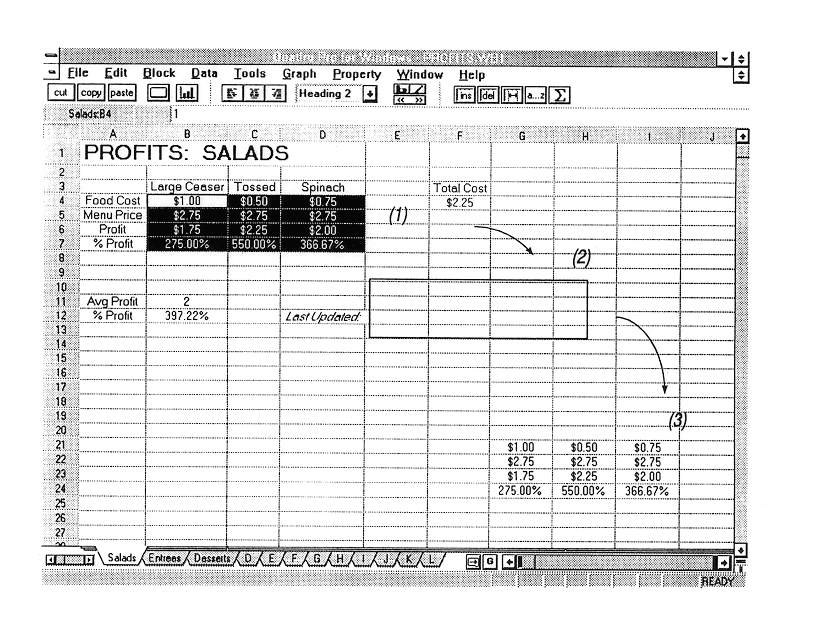Data Engine Techs v. Google (Fed. Cir. 2021)
This is an old-school claim construction case. The district court narrowly construed DET’s claim term “three-dimensional spreadsheet” and consequently ruled that Google does not infringe. On appeal, the Federal Circuit has affirmed.
DET’s invention here is mainly about adding tabs to a spreadsheet to make it “three dimensional.” In a prior decision, the Federal Circuit found the claims patent-eligible. “[T]he claim is directed to a specific method for navigating through three-dimensional electronic spreadsheets. . . . The Tab Patents solved [a] known technological problem in computers in a particular way—by providing a highly intuitive, user-friendly interface with familiar notebook tabs for navigating the three-dimensional worksheet environment.”
Judge Stark had construed the claims prior to his eligibility ruling. On remand, however, Google asked for additional claim construction of the preamble term “three-dimensional spreadsheet” since that aspect of the invention had been critical to the Federal Circuit’s eligibility determination.
The district court did construe the term in a narrow fashion — requiring “a mathematical relation among cells on different spreadsheet pages.” This construction essentially requires each tab to be a layer in a stack of sheets and that the order of the sheets have mathematical importance. In the example above the “Salads” layer is one-page away from “Entrees”, and two pages from “Desserts.” A mathematical relationship is necessary to allow for 3-D features such as 3-D ranges. The specification explains that
Three-dimensional spreadsheets allow the user to create a worksheet having cells arranged in a 3-D grid. In this manner, the user can manipulate multi-dimensional ranges, i.e., Solid blocks of cells. This feature has distinct advantages. For example, the user can build a worksheet consisting of multiple two dimensional spreads, define 3-D ranges that span these spreads, and copy a range of rows and columns into each of many 2-D spreads at once. This feature eases difficult choirs, such as consolidation of multiple spreads.
‘259 Patent at Col. 2-3. Further, in the prosecution history, the patentee distinguished a Lotus-123 prior art reference allowing linking between different pages as not representing a “true 3D spreadsheet.”
One issue here is that the 3D spreadsheet requirement is part of the preamble of the claim, not the body of the claim.
12. [A] computer-implemented method of representing a three-dimensional spreadsheet on a screen display, the method comprising . . .
Ordinarily, preambles are not limiting. Here, the Federal Circuit though fell back on the nose-of-wax analogy — explaining that the patentee had already pushed the wax in one direction and is now estopped from pushing it back. Namely, during the eligibility determination, the patentee pushed its case as an improvement to three-dimensional spreadsheets, and the court relied upon those arguments to find the invention eligible for patenting.
Non-infringement affirmed.
"claim" - Google News
August 31, 2021 at 04:19PM
https://ift.tt/2Y7la6Z
Still True: Name of the Game is the Claim - Patently-O
"claim" - Google News
https://ift.tt/2FrzzOU
https://ift.tt/2VZxqTS
Bagikan Berita Ini
















0 Response to "Still True: Name of the Game is the Claim - Patently-O"
Post a Comment